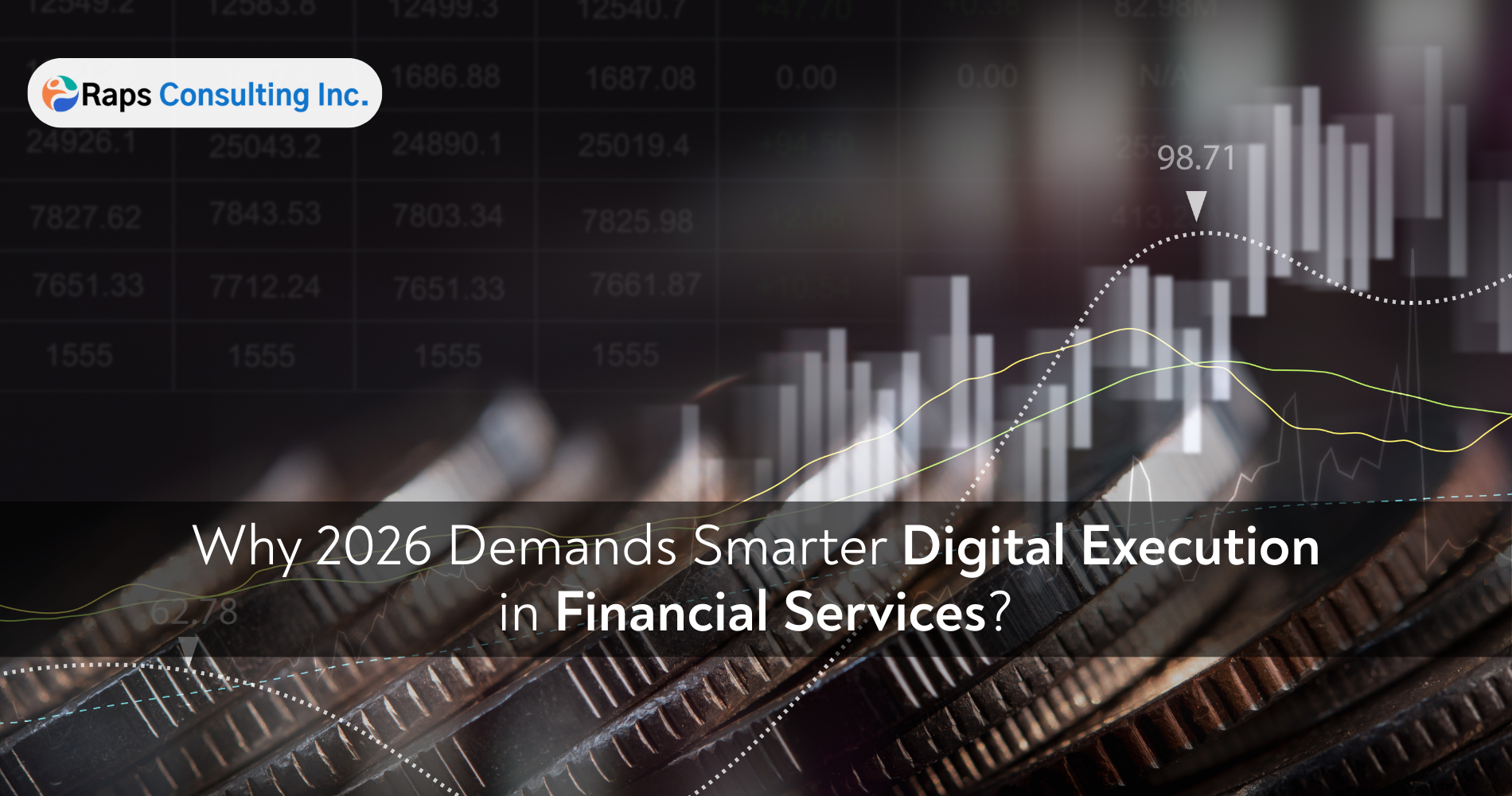The New Reality of Financial Services
For years, financial institutions treated compliance as the finish line. Check the regulatory boxes, pass audits, avoid penalties, and the business could run as usual. But 2026 paints a more complex picture.
Compliance is no longer the differentiator. Customers expect seamless, digital-first experiences, investors demand operational agility, and regulators continue to tighten standards. In this landscape, doing the minimum to stay compliant simply isn’t enough. What matters now is digital execution, how fast, how securely, and how intelligently financial services firms can adapt.
From Checklists to Competitive Advantage
According to PwC’s Global Financial Services Survey (2024), 78% of executives say their digital transformation strategies are still fragmented, leaving gaps between compliance requirements, customer expectations, and operational efficiency. These gaps cost money, and market share.
Smart firms are shifting perspective: compliance is just the baseline. The real competitive advantage comes from integrating regulatory demands, digital innovation, and customer trust into one unified execution strategy.
That’s not about chasing every new trend. It’s about aligning digital initiatives with measurable outcomes:
- Operational efficiency (fewer manual processes, faster approvals)
- Data-driven compliance (audit-ready systems that reduce human error)
- Customer confidence (digital experiences that feel secure and seamless)
Why 2026 Raises the Stakes
The timing is critical. By 2026, three forces will redefine the financial services sector:
- AI and Automation as the Default
McKinsey estimates that up to 40% of finance tasks could be automated by 2030, and early adopters are already realizing the benefits. Firms that don’t leverage AI for compliance checks, fraud detection, and reporting risk falling behind on both speed and accuracy.
- Cybersecurity Pressure
With financial data breaches rising 30% year-over-year (IBM Cost of a Data Breach Report, 2024), regulators will tighten scrutiny even further. Cybersecurity can no longer be siloed from digital transformation; it’s a pillar of execution.
- Customer Trust at a Premium
Accenture reports that 52% of banking customers would switch providers after just one poor digital experience. In 2026, retention won’t be won by rates alone but by trust, usability, and transparency.
Smarter Digital Execution in Action
So, what does smarter digital execution look like in practice? It’s not buzzwords or inflated transformation budgets. It’s about practical, outcome-driven modernization:
- Integrated Compliance Platforms
No more scattered reporting systems. Unified platforms ensure regulatory alignment is automatic, not reactive.
- Cloud-Native Operations
Moving beyond legacy systems allows financial institutions to scale operations, cut costs, and increase agility, all while staying compliant.
- Data Transparency
Centralized, auditable data systems mean compliance teams and business leaders work from the same truth, reducing risk and improving decision-making.
- Human + Digital Balance
Augmenting skilled teams with digital tools creates agility without sacrificing judgment. Smart automation frees professionals to focus on strategy, not repetitive tasks.
Where RAPS Fits In
At RAPS Consulting Inc, we’ve seen firsthand how financial firms struggle when compliance and digital innovation are treated as separate lanes. Our work bridges that gap. We don’t just build systems that meet regulatory standards, we design them to future-proof operations, optimize processes, and instill trust.
From custom software development to IT consulting and digital transformation strategies, we help financial services organizations reframe digital execution as a growth enabler, not just a compliance safeguard.
The Road Ahead
2026 won’t reward firms that play defense. The winners will be those who see compliance as a table stake and focus instead on building digitally intelligent systems that are fast, secure, and customer centric.
The future of financial services is clear: it’s not about doing enough to pass. It’s about doing more to lead.

Final Word: Beyond Compliance, Into Competitiveness
Digital execution isn’t a side project. In financial services, it’s the backbone of trust, agility, and long-term relevance.
The question isn’t whether compliance matters, it always will. The question is: will your firm be remembered for checking the boxes, or for setting the pace?






Leave a Reply